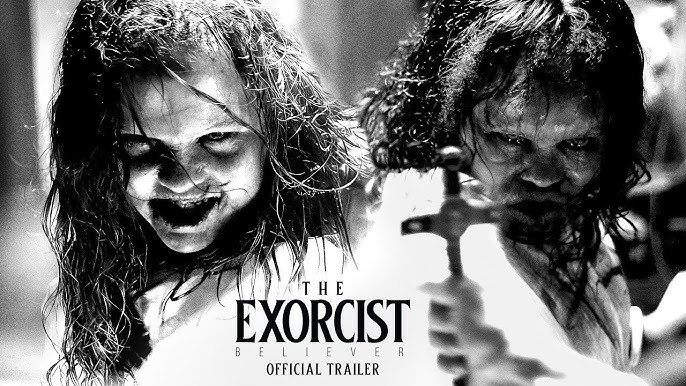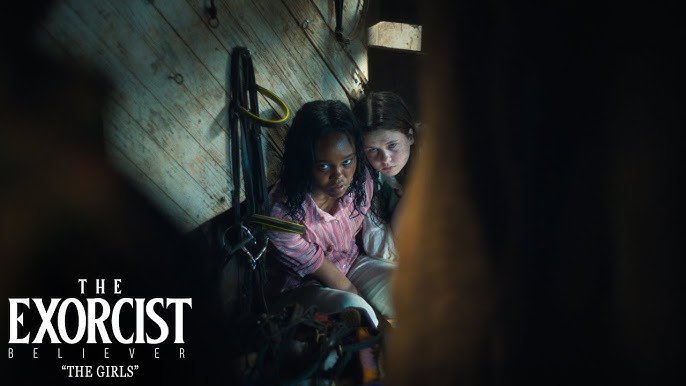The Exorcist: Redeemer (2025)
September 26, 2025
Review of The Exorcist: Redeemer (2025)
The Exorcist: Redeemer (2025) breathes new life into the iconic horror franchise, blending psychological terror with supernatural horror to create a chilling experience that both respects the roots of the original and pushes the genre into darker, more thought-provoking territory. Directed by Sarah Williams, this sequel takes the beloved franchise in a bold direction, exploring themes of faith, redemption, and the haunting consequences of evil, all while providing audiences with the kind of edge-of-your-seat scares that have made The Exorcist a timeless classic.
Plot Overview
Set several decades after the original exorcism, The Exorcist: Redeemer follows Father Gabriel Carter (played by Oscar Isaac), a troubled priest who has lost his faith after the traumatic events of his past exorcisms. Despite his doubts, Father Carter is called back into the fray when a young girl, Lily (played by Florence Pugh), is possessed by a demon in a remote town. As he faces his own internal demons, Father Carter must confront the dark forces that have possessed Lily — and perhaps the very darkness that lies within him.
In a town filled with secrets, Father Carter forms an uneasy alliance with Dr. Elise Anderson (played by Jessica Chastain), a psychologist who is skeptical of the supernatural but is forced to confront the possibility that Lily’s condition is far worse than any medical explanation can offer. As Father Carter and Dr. Anderson work together, they uncover a series of disturbing events, leading them to question whether the demon is truly responsible for Lily’s possession, or if something far more sinister is at play.
The film takes a unique approach by combining elements of psychological horror and religious themes, exploring not just the battle between good and evil, but also the personal cost of redemption and the price one pays for facing the ultimate evil.

Themes of Faith, Redemption, and Internal Struggles
The Exorcist: Redeemer focuses heavily on the internal struggles of its protagonist, Father Gabriel Carter. His journey is not just about exorcising the demon from Lily, but also about confronting his own loss of faith. The film masterfully explores the complexities of belief and redemption, asking difficult questions about the nature of evil, the role of faith in fighting it, and the toll that such battles take on the soul.
Father Carter’s character arc is deeply emotional, as he struggles with guilt and doubt, making his eventual return to his priestly duties a powerful moment of personal growth. The film explores how faith can both heal and wound, and it places a heavy emphasis on the notion that redemption is a journey that requires confronting one’s darkest fears — both external and internal.
The presence of Dr. Elise Anderson adds another layer of complexity to the film. As a psychologist who rejects the supernatural, her logical approach to Lily’s condition provides a counterbalance to Father Carter’s religious beliefs. Their partnership represents the conflict between science and faith, and their evolving relationship is at the heart of the film’s thematic exploration.

Horror and Suspense
As a horror film, The Exorcist: Redeemer delivers on both psychological and visceral levels. The demon’s possession of Lily is genuinely disturbing, with the young girl’s transformation becoming increasingly horrifying as the film progresses. The practical effects and makeup work are exceptional, making the demon’s presence both menacing and grotesque.
The film excels in creating tension, building suspense through atmospheric dread and moments of psychological unease. Williams uses sound, lighting, and pacing to heighten the sense of dread, creating scenes where the audience feels the terror looming just beneath the surface. There’s a palpable sense of danger that never quite lets up, and even during quieter moments, the film keeps viewers on edge.
The exorcism scenes themselves are intense and genuinely terrifying, combining physical horror with psychological torment. The demon’s taunts and manipulations are not just physical but deeply personal, digging into the fears, regrets, and doubts of both Father Carter and the other characters. This psychological depth adds a unique layer to the horror, making the scares feel earned rather than simply relying on jump-scares.

Performances
The performances in The Exorcist: Redeemer are exceptional, particularly from Oscar Isaac as Father Gabriel Carter. Isaac brings a deep vulnerability to his role, portraying a man struggling with his faith and the burden of his past mistakes. His emotional range gives the film its heart, allowing the audience to connect with his journey of redemption and self-forgiveness.
Florence Pugh delivers a haunting performance as Lily, embodying both the innocence of a young girl and the terrifying transformation brought on by possession. Her performance in the exorcism scenes is unsettling, capturing both the physical and emotional toll of the possession.
Jessica Chastain is a standout as Dr. Elise Anderson. Her character provides a grounded perspective amidst the chaos, and Chastain’s ability to convey skepticism, fear, and empathy adds depth to the film. The dynamic between Chastain and Isaac is compelling, with both actors creating a believable and emotionally charged relationship.

Cinematography and Visuals
The cinematography in The Exorcist: Redeemer is stunning, with dark, shadow-filled scenes that convey the suffocating atmosphere of fear and despair. The film uses tight close-ups to heighten the intensity of the exorcism scenes and to emphasize the emotional turmoil of the characters.
The use of lighting is particularly effective in creating a sense of dread, with stark contrasts between light and shadow that mirror the battle between good and evil. The visual effects, particularly in the possession sequences, are expertly executed, blending practical and digital effects to create a truly horrifying experience.
The film’s pacing also contributes to its effectiveness, with moments of quiet tension giving way to explosive horror. The buildup of suspense is methodical and deliberate, drawing the audience in and keeping them on edge throughout.

Final Thoughts
The Exorcist: Redeemer is a terrifying and thought-provoking addition to the Exorcist franchise. By combining psychological depth, emotional storytelling, and genuine horror, the film takes the classic exorcism tale in new directions, while staying true to the elements that have made the original so iconic. With strong performances, atmospheric direction, and a compelling exploration of faith, redemption, and evil, this film is sure to satisfy both longtime fans of the series and newcomers to the franchise.
Rating: 8.5/10 – A chilling, emotionally charged horror film that redefines the Exorcist series with a strong focus on character, faith, and psychological terror.

